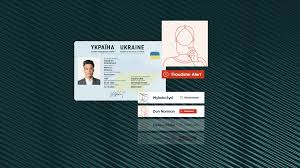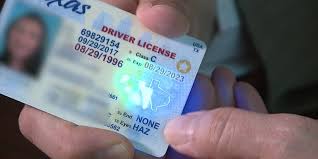identity fraud
Introduction:
Identity fraud is no longer a rare occurrence confined to obscure corners of the web; it has evolved into a sophisticated global issue affecting millions of individuals and businesses every year. With cybercriminals growing more adept at exploiting security vulnerabilities, the need for effective identity protection has never been more urgent. This article explores the rise of identity fraud, the latest trends in fraud prevention, and introduces solutions designed to protect you from becoming the next victim.
Section 1: What is Identity Fraud? A Growing Threat
1.1 Definition and Types of Identity Fraud
Identity fraud occurs when an individual’s personal information is stolen and used to commit fraud, often leading to financial loss, reputational damage, and emotional stress. There are several types of identity fraud, including:
- Financial Identity Theft: Stealing personal information to access bank accounts, open lines of credit, or make unauthorized purchases.
- Medical Identity Theft: Using stolen identity information to obtain medical care, prescription drugs, or insurance coverage.
- Tax Identity Theft: Filing fraudulent tax returns to claim refunds or benefits under another person's name.
- Synthetic Identity Theft: Creating entirely new identities by combining real and fabricated information, making detection harder.
- Criminal Identity Theft: Impersonating someone else during an arrest or investigation to avoid legal repercussions.
The prevalence of these types of fraud shows that identity theft can impact nearly every aspect of an individual’s life.
1.2 Alarming Statistics
Identity fraud is more common than many people realize. According to recent studies:
- In 2023, identity fraud cost victims globally more than $50 billion.
- 33% of adults in the United States have experienced some form of identity fraud in their lifetime.
- Identity theft incidents have grown by nearly 50% over the past decade, driven in part by data breaches and digital transformation.
These statistics highlight the need for robust protection measures as the frequency and sophistication of identity fraud continue to rise.
Section 2: Understanding the Causes of Identity Fraud
2.1 Digital Transformation and Data Vulnerabilities
As more personal data moves online, individuals become increasingly vulnerable to hackers. Identity fraud thrives in a digital ecosystem where sensitive data can be intercepted, sold on the dark web, or used in phishing schemes. Key vulnerabilities include:
- Weak Passwords: Many people still use easily guessable passwords or reuse the same one across multiple accounts, making them easy targets.
- Data Breaches: Hackers often exploit weaknesses in company systems to steal massive amounts of personal information.
- Social Media Exposure: Oversharing personal details on social platforms can provide cybercriminals with enough information to answer security questions and impersonate the account holder.
2.2 Social Engineering Attacks
Cybercriminals often manipulate individuals into handing over sensitive information through tactics like phishing, where emails or texts are crafted to look like they come from trusted sources. These social engineering attacks are becoming increasingly sophisticated, with fraudsters exploiting human psychology to gain access to financial accounts or personal data.
Section 3: Market Analysis for Identity Fraud Protection Solutions
3.1 Overview of the Identity Fraud Protection Market
The global identity theft protection market has been experiencing significant growth, driven by rising concerns over privacy and security breaches. With new regulations and consumer demand for better protection, businesses in this sector are booming. The market is expected to grow from $10 billion in 2021 to over $26 billion by 2028.
3.2 Major Players in the Market
Several companies dominate the identity theft protection industry. These include:
- LifeLock: Known for its comprehensive identity monitoring services.
- Experian: Provides credit reporting and identity protection services.
- IDShield: Offers both individual and family protection plans.
- Norton 360: Incorporates cybersecurity tools with identity theft protection.
These companies offer a range of services, from credit monitoring to identity restoration, but each has its strengths and weaknesses. Understanding these differences is key for consumers when selecting the right protection plan.
Section 4: Product Features and Advanced Fraud Detection Technology
4.1 Essential Features of an Identity Fraud Protection Product
To effectively combat identity fraud, protection services must offer a comprehensive suite of features designed to cover all aspects of identity security. The core features should include:
- Credit Monitoring: Alerts users to any unusual activity on their credit report, such as new accounts being opened in their name.
- Dark Web Monitoring: Scans the dark web for your personal information, including Social Security numbers, financial accounts, and passwords.
- Identity Theft Insurance: Many services offer financial coverage in case your identity is stolen, helping you recover funds or restore your credit.
- 24/7 Support: Having a dedicated team to guide you through identity recovery processes is crucial.
- Multi-Factor Authentication (MFA): Adding an extra layer of security by requiring more than just a password for account access.
4.2 Cutting-Edge Technologies in Fraud Detection
Fraud detection is evolving, with artificial intelligence (AI) and machine learning playing a pivotal role in enhancing identity protection. Some of the advanced technologies include:
- AI-Powered Algorithms: AI helps analyze vast amounts of data to detect suspicious activity or patterns that could indicate identity theft.
- Biometric Authentication: Incorporating fingerprint, facial recognition, or voice biometrics provides an additional safeguard against fraud.
- Blockchain Technology: While often associated with cryptocurrency, blockchain has potential applications in secure identity verification due to its decentralized and immutable nature.
These technologies are helping organizations and individuals stay ahead of cybercriminals by predicting and preventing fraud before it occurs.
Section 5: Target Audience for Identity Fraud Protection Products
5.1 Key Demographics
Identity theft protection services appeal to a wide audience, but there are specific groups who are more likely to seek out these solutions:
- High-Net-Worth Individuals: Wealthy individuals are prime targets for cybercriminals due to their financial assets.
- Frequent Online Shoppers: People who regularly shop online and store payment information are at greater risk of identity theft.
- Small Business Owners: Businesses face the dual risk of corporate identity theft and customer data breaches, making identity protection crucial.
- Older Adults: The elderly are often targets of fraudsters who prey on their unfamiliarity with modern cybersecurity threats.
- Parents: Parents often purchase family plans to protect their children's identities, which are increasingly being targeted by synthetic identity fraud.
5.2 Psychological and Behavioral Factors
Understanding the psychological factors behind consumer decisions helps refine product marketing. Fear of financial loss and privacy invasion are major drivers for individuals seeking identity protection. People who have already experienced identity fraud or know someone who has are also more likely to invest in comprehensive solutions.
Section 6: Overcoming Common Objections
6.1 “I Don’t Think I’m at Risk”
Many individuals mistakenly believe that identity theft only happens to high-profile individuals or large corporations. In reality, everyday people are frequently targeted, and personal data can be stolen from even the most innocuous sources, such as online shopping platforms or social media.
6.2 “I Can Just Monitor My Own Credit”
While monitoring your own credit is important, it’s often not enough. Many forms of identity theft, such as medical or tax fraud, may not immediately show up on a credit report. Professional services provide a broader range of monitoring, including social security number usage, loan applications, and dark web scanning.
6.3 “It’s Too Expensive”
Identity theft can cost far more than an annual protection subscription. Victims may spend months, even years, trying to restore their credit and deal with the aftermath of fraud. Some services also include identity theft insurance to cover expenses related to recovery, making them a worthwhile investment.
Section 7: Choosing the Right Identity Fraud Protection Plan
7.1 Evaluating Your Needs
When choosing a protection plan, consider your lifestyle and risk factors. If you frequently shop or bank online, a comprehensive plan that includes internet monitoring and fraud alerts is essential. If you run a small business, consider a service that offers business identity protection alongside personal coverage.
7.2 Comparing Popular Services
To make an informed decision, it's crucial to compare the features and costs of leading identity theft protection services. Evaluate factors such as:
- Ease of Use: User-friendly platforms and mobile apps can make monitoring your identity effortless.
- Customer Service: A reliable support team is invaluable in the event of identity theft.
- Additional Features: Consider services that go beyond basic monitoring, offering more comprehensive coverage like social media monitoring or child identity protection.
Conclusion: The Future of Identity Protection
The future of identity protection lies in the continued evolution of technology. As cybercriminals adapt, so too must the tools used to protect personal and corporate identities. With the rise of AI, machine learning, and blockchain, the identity fraud protection industry is poised to offer even more robust solutions in the coming years. By staying informed about the risks and investing in cutting-edge protection services, individuals and businesses can safeguard their futures in an increasingly digital world.
Identity fraud may be a persistent threat, but with the right knowledge and the best tools, it’s a challenge that can be met head-on. The question is no longer if you should protect yourself, but rather which service will best equip you to stay one step ahead of the fraudsters.
 Maryland Fake ID
Maryland Fake ID
 Alabama Fake ID
Alabama Fake ID
 Massachusetts Fake ID
Massachusetts Fake ID
 Ontario Fake ID
Ontario Fake ID
 North Carolina Fake ID
North Carolina Fake ID
 New Jersey Fake ID
New Jersey Fake ID
 Kansas Fake ID
Kansas Fake ID

